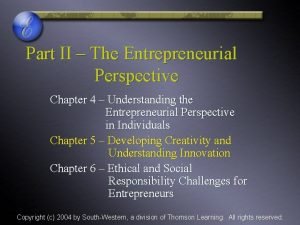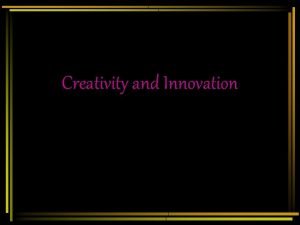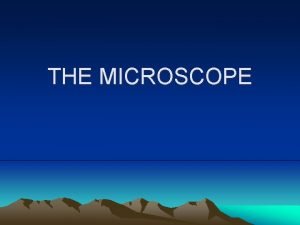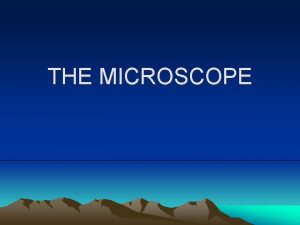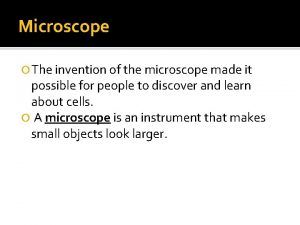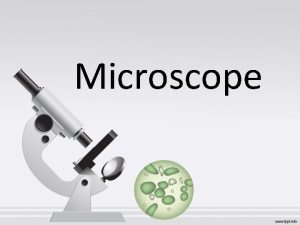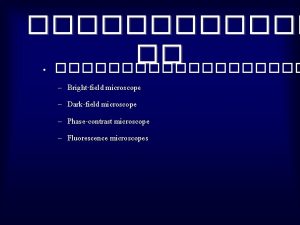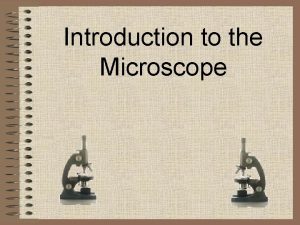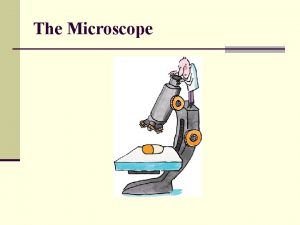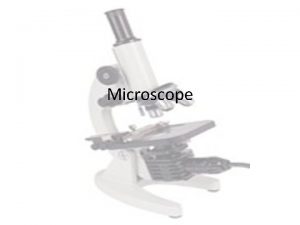THE MICROSCOPE Invention of the Microscope The microscope










- Slides: 10

THE MICROSCOPE

Invention of the Microscope • The microscope was invented by Zacharias Jansen and his father (a pair of eyeglass makers) in the late 1500 s and magnified objects up to 9 x • The invention of the microscope allowed scientists to view cells for the first time.

Invention of the Microscope • In 1665, Robert Hooke examined a thin piece of cork under the microscope and noticed that it seemed to be made of thousands of tiny empty chambers which Hooke called “cells” because they reminded him of the small rooms of a monastery called cells.

Invention of the Microscope • At about the same time, the Dutchman Anton van Leeuwenhoek used a microscope to observe pond water. The microscope revealed a world of tiny living organsims.

Light Microscope • Uses either sunlight or artificial light to view objects • The object being viewed must be thin enough for light to pass through • The advantage of a light microscope is that it can magnify many microscopic organisms while they are still alive • The disadvantage of this microscope is that it can only magnify about 1000 x

Electron Microscope • There are 2 types of electron microscopes: – Transmission Electron Microscopes (TEM) pass electrons through a thin slice of an object – Scanning Electron Microscopes (SEM) examine the outside of an object by bouncing electrons off the surface TEM of mitochondria SEM of blood cells

Electron Microscope (cont. ) • The advantage of this microscope is that they can magnify objects up to one million times their actual size • The disadvantage of this microscope is that specimens must be fixed in position and placed in a vacuum so organisms can not be alive

Resolution • The ability to distinguish between two points • The better the resolution, the sharper the image

Dyes • Used to color a specimen and thus improve the contrast between different parts of a specimen • Staining, however, usually kills the specimen

Magnification • Makes the image look larger • To find the magnification, multiply the magnification of the ocular lens by the magnification of the objective lens • EX: 4 x objective and a 10 x ocular lens will give a magnification of 40 x
 Invention hub trello
Invention hub trello Invention of new means through mental combinations
Invention of new means through mental combinations Slinky invention date
Slinky invention date The entrepreneurial perspective
The entrepreneurial perspective Animoto presentation
Animoto presentation Environmental perception definition ap human geography
Environmental perception definition ap human geography Creativity innovation and invention
Creativity innovation and invention Invention of computer
Invention of computer 4 periods of information age
4 periods of information age Cottage industry examples
Cottage industry examples What did frederick m jones invent
What did frederick m jones invent



